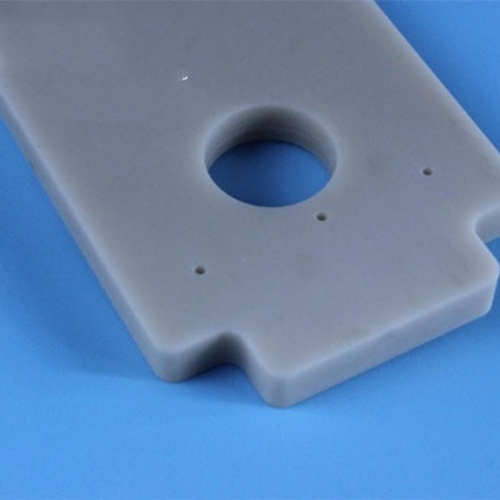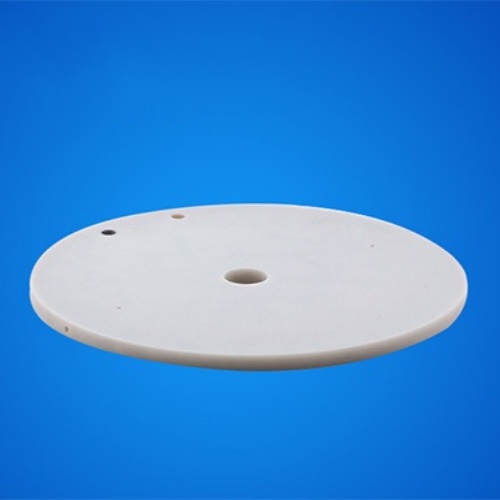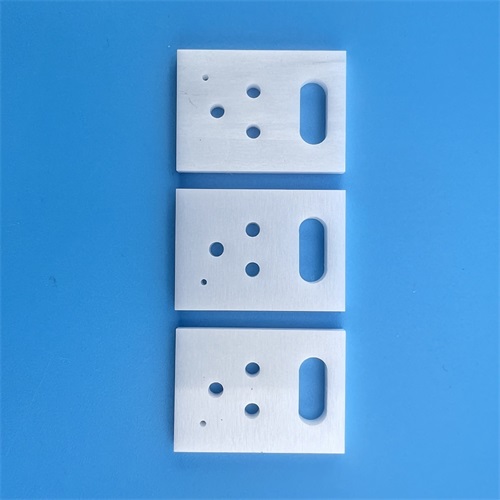What are the advantages of Macor’s low coefficient of expansion for processing glass ceramics
In the vast field of materials science, Macor (a machinable glass ceramic) stands out with its unique properties and has become a key material in many high-tech applications. Among them, its significant coefficient of thermal expansion (CTE) characteristic endows it with irreplaceable advantages, profoundly affecting its application performance in harsh environments.

1、 The essence of low coefficient of expansion and the performance of Macor
Thermal expansion is a common physical phenomenon in which the volume of most materials changes with temperature changes. However, Macor undergoes a special glass ceramicization process (i.e. crystallization process), resulting in a highly uniform and fine composite of crystalline and glass phases in its microstructure. This unique microstructure allows Macor to undergo minimal size changes during heating or cooling, exhibiting a very low and stable coefficient of thermal expansion, typically ranging from room temperature to 800 ° C, with a CTE of approximately 8 × 10 ⁻⁷/° C (specific values may vary slightly depending on batch and measurement conditions), much lower than many traditional metals (such as steel, aluminum) and even some ordinary ceramic materials.
This low expansion characteristic is not constant, and the CTE of Macor may vary slightly in different temperature ranges. However, within its commonly used operating temperature range, this variation is relatively gentle and predictable, providing great convenience and reliability for its application.

2、 Detailed explanation of the core advantages brought by low coefficient of expansion
- Excellent thermal stability and dimensional accuracy maintenance
This is the most direct and core advantage of Macor’s low coefficient of expansion. In environments with large temperature fluctuations, Macor can maintain a high degree of stability in its shape and size, whether it is high-temperature heating or sudden cooling and heating.
Precision component manufacturing: In applications that require extremely high dimensional accuracy, such as fixtures for optical components, precision molds, bases or chucks in semiconductor manufacturing equipment, temperature changes are one of the main factors leading to dimensional deviations. The low expansion characteristics of Macor ensure that the dimensions of these components remain accurate even when the equipment is running and heating up or the ambient temperature changes, thereby ensuring the machining accuracy and quality of the final product. For example, in the semiconductor lithography process, the positioning accuracy of the mask or wafer is required to reach the nanometer level, and the clamping or supporting structure made by Macor can effectively avoid positioning errors caused by thermal expansion and contraction.
Laboratory equipment: In laboratory equipment such as high-temperature sintering and heat treatment, if Macor is used to manufacture components such as crucibles, tube furnace liners, and sample racks, it can ensure that the relative position of the samples remains unchanged during repeated heating and cooling cycles, avoiding experimental failures or inaccurate data caused by component deformation. - Excellent mechanical and thermal stress resistance
Materials will generate thermal stress when the temperature changes, which is due to the internal stress generated by different parts of the material or the difference in thermal expansion between different materials. A low coefficient of expansion means that the thermal stress generated inside the material is smaller under the same temperature change.
Excellent thermal shock resistance: Macor’s low expansion characteristics and glass ceramic structure endow it with excellent thermal shock resistance. This means that it can withstand large and rapid temperature changes without cracking or damage. This is crucial for applications that require frequent start stop, high temperature control accuracy, or unexpected temperature fluctuations. For example, in plasma spraying, certain types of welding fixtures, or rapid heat treatment equipment, Macor components can withstand severe temperature gradients without failure.
Reduce failure caused by internal stress: In complex shaped or large-sized components, uneven cooling or heating can easily lead to internal stress concentration and cause cracks. The low expansion characteristics of Macor help to evenly distribute thermal stress, reduce stress peaks, and thus improve the overall reliability and service life of components. - Efficient thermal matching with multiple materials
In many engineering applications, it is often necessary to combine different materials for use. At this point, the difference in thermal expansion coefficients between materials becomes a key issue. If the difference is too large, different materials will attempt to expand or contract at different rates during temperature changes, resulting in significant shear stress at the interface, which may cause connection failure, seal leakage, or structural damage.
Matching with glass and quartz: Macor’s CTE is similar to many glass and quartz materials. This makes it very suitable for use as a support, fixture, or seal for these materials. For example, when manufacturing high-precision optical components or vacuum equipment, Macor can be used to fix glass lenses or quartz windows, ensuring that they can expand and contract synchronously when temperature changes, maintaining good optical contact and sealing performance, and avoiding stress damage or air leakage caused by thermal mismatch.
Matching with certain metals: Although Macor’s CTE differs significantly from most metals, compatibility with certain metal components can be achieved to some extent through carefully designed structures (such as using flexible connections, transition designs) or selecting metal alloys with specific CTEs. For example, in some vacuum or high-temperature sealing structures that require the combination of metal and ceramic, Macor can serve as an intermediate transition material, and its relatively low coefficient of expansion helps reduce the enormous stress generated when the metal is directly combined with high expansion ceramics (or other materials). - Simplify design and reduce system complexity
Due to the low expansion characteristics of Macor, which provide dimensional stability and stress relief, engineers can adopt more simplified solutions when designing related systems.
Reducing compensation mechanisms: In systems that require precise control of size or position (such as precision measuring instruments, mirror support systems for astronomical telescopes), complex temperature compensation mechanisms are typically required to counteract the thermal expansion of materials. Using Macor as a key component can significantly reduce or even eliminate the need for these compensation mechanisms, simplifying design, reducing costs, and improving system reliability and response speed.
Loose assembly tolerance: During the assembly process, temperature changes may cause component dimensions to exceed the tolerance range and cannot be assembled. By using low expansion Macor components, assembly tolerances can be designed to be looser, reducing assembly difficulty and costs while minimizing assembly issues caused by temperature fluctuations. - Extend equipment lifespan and improve reliability
Whether as a key structural component or auxiliary part of the equipment, Macor’s low coefficient of expansion helps to extend the service life of the entire device and improve its operational reliability.
Reducing fatigue damage: Repeated thermal cycling is one of the important causes of material fatigue damage. The low expansion characteristics and good thermal shock resistance of Macor enable it to maintain structural integrity after multiple thermal cycles, making it less prone to cracking or performance degradation, thereby extending the service life of key components and even the entire system of the equipment.
Maintaining Performance Stability: For devices that are sensitive to size or positional accuracy, such as lasers, sensors, and precision machinery, Macor’s low expansion characteristics ensure stable performance under long-term operation and various temperature conditions, reducing performance degradation or failure caused by thermal drift.

The low thermal expansion coefficient of Macor’s machinable glass ceramics is not a single advantage, but has derived a series of core values in harsh environments. It is not only the cornerstone for achieving precision manufacturing and ensuring dimensional accuracy, but also a key factor in improving material thermal shock resistance, achieving efficient thermal matching of multiple materials, simplifying system design, and extending equipment life. It is precisely these comprehensive advantages that enable Macor to play an indispensable role in aerospace, semiconductor manufacturing, optical engineering, laboratory equipment, medical instruments, and many cutting-edge technological fields that require high temperature, high precision, and high reliability.
Brudeze Ceramics supplies and sells a wide range of high-quality quartz glass, including alumina ceramics, zirconia ceramics, silicon nitride ceramics, aluminum nitride ceramics, silicon carbide ceramics, boron carbide ceramics, bioceramics, machinable ceramics, etc. We can meet the customization requirements of various ceramic products.
Tags: boron carbide ceramics
PREVIOUS:What are the safe applications of Macor ceramics in the nuclear industry
NEXT:What is the thermal stability of Macor machinable ceramics
CATEGORIES
LATEST NEWS
- Petrochemical ceramic injec...
- Zirconia Ceramic Rod Custom...
- High-temperature resistance...
- What is the wear resistance...
- What is the hardness of cer...
- Aluminum oxide ceramic cust...
- What are the main aspects o...
- What are the mechanical pro...
- Thermal properties of zirco...
- What properties should be c...
